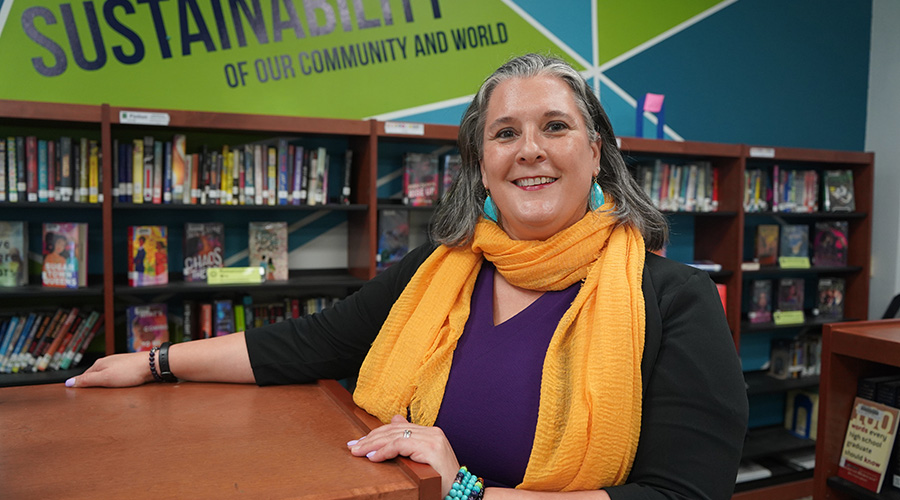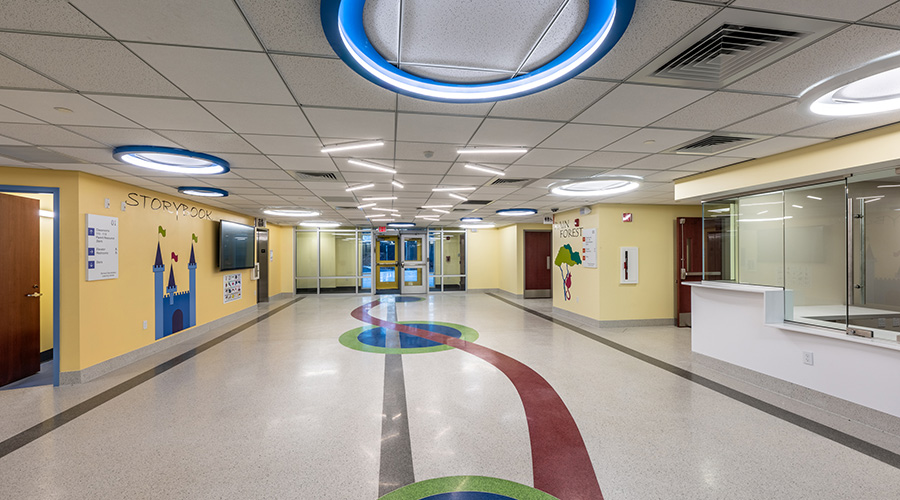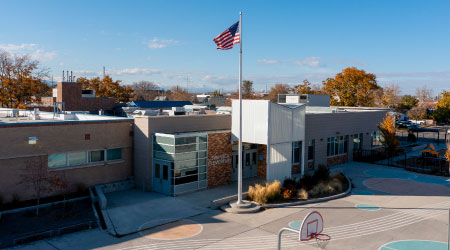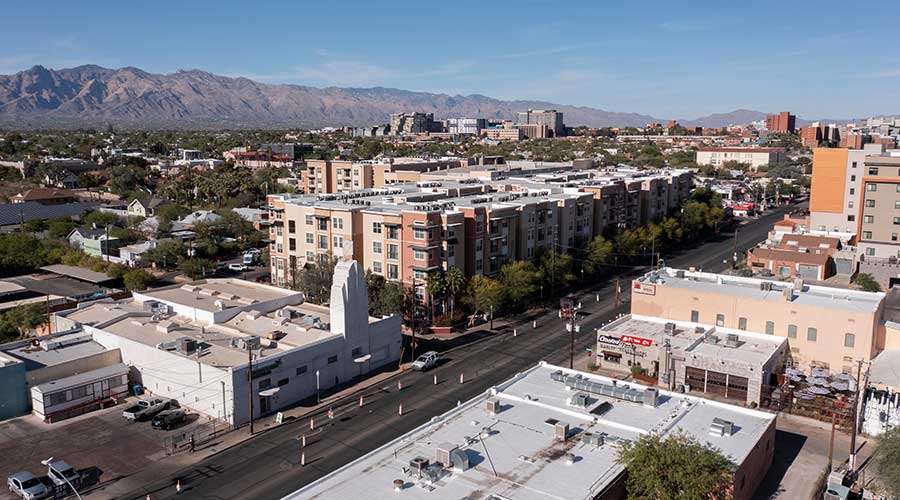Evaluating Campus Emergency Response Plans After Virginia Tech
Focusing on planning, communication and technology can aid in prevention — and response
While outrage still lingers in the general public about just how a student at Virginia Tech could strike down 32 people on the campus, facility executives are saddled with an unenviable task: trying to find ways to prevent the unthinkable from occurring again.
“It’s a totally unimaginable situation," says Vic Atherton, associate vice president of Infrastructure and Environmental Services at the University of Miami. "There are some people doing things that you and I would never dream of."
While fires, natural disasters, medical emergencies and even some crimes can be planned and accounted for, the random nature of the Virginia Tech shootings could not be predicted, experts say. Nevertheless, the events underscore an important question: What can be done from a security and facility management standpoint that could save lives should such a horror ever occur again?
There are a number of challenges. To begin, university campuses, particularly those with onsite residential housing, are significantly different than commuter colleges and high schools.
“When you have a residential population, you have people on campus 24 hours a day. With a commuter campus, you have people on campus only when they have classes,” says Atherton. “You also have lots of functions and after hours events to cater to the on-campus student.”
In theory, college campuses could be hardened to the same degree as an airport or any other high security environment. Of course the cost would be astronomical. More importantly, such level of security would run counter to the philosophy espoused by most colleges and universities.
“In some environments, it’s impossible to do," says Roy Bordes, president of the Bordes Groups, an Orlando, Fla.-based design and engineering firm for security systems. "On college campuses where they foster freedom of thought, freedom of learning and freedom of expression, you have to take the risk.”
In the case of Virginia Tech, that sort of violence is “almost impossible to stop,” Bordes says. “There are only certain things they can do.”
The Importance of Rapid Communication
Communication, however, is one thing virtually all campuses can do. Solid communication efforts will not only aid in protecting a campus’ population, experts say, but also help smooth the environment after a tragedy occurs.
“Communication has and will be the primary need in any incident," says Bob Lang, a security consultant and former director of Homeland Security at Georgia Tech University. That is true whether the event in question is a natural disasters like Hurricane Katrina or a campus shooting.
Last week’s shooting only re-enforces the importance of rapid communication when a disaster occurs.
“It is disturbing that the assailant had two hours in between shootings to go the post office and mail the NBC package. Communications to the students to be alert, as well as mass communications were inefficient,” Lang says.
But how exactly is the best way to quickly communicate what is going on to thousands of students spread across potentially dozens of buildings on a college campus?
The University of Miami routinely deals with weather-related emergencies, being located in the coastal community of Coral Gables, Fla.
As a result, the school of more than 15,000 students has developed a sophisticated communication system that allows the school to call, text message and e-mail everyone associated with the campus who has registered with the system to alert them to potentially hazardous conditions.
“If a hurricane is coming we can dispatch information. We can send that information out, and everybody knows,” Atherton says.
While it’s tempting to rely solely on personal communication devices for immediate, efficient dissemination of information, not everyone has a cell phone or constant access to the Internet.
When the word needs to get out to everyone quickly, facility and security managers might want to look at new options for old technologies such as public address systems.
Old-style PA systems distort sound and are difficult to understand. In a crisis, clear instructions are critical. New systems such as "true voice" array units are clear from a great distance.
Similar systems can be integrated into individual buildings so that messages specific to that building can be delivered without causing needless worry to adjacent locations, Lang says.
Communication should be two-way. Cell phones will put 9-1-1 calls through to the nearest public safety answering point designated for whatever tower the call hits. That may or may not be the campus police dispatch. People in the classroom need direct access to campus police — usually the first responders.
Land-line telephones or push to talk boxes in the classrooms would allow people to directly contact campus dispatch, Bordes says.
Assessing the Role of Technology
In the wake of the Virginia Tech incident, it's natural to turn to technology as a way to prevent similar incidents. Unfortunately, advanced technology can play a role, but can't guarantee it will prevent a tragedy, especially if the person is an insider with proper access.
For example, access control systems might stop an outsider from gaining unauthorized access to a building such as a dorm or office complex, but they wouldn’t stop a resident of that dorm or a worker within that building.
“We’ve had magnetic locks on doors for some time, but in the case of a Virginia Tech incident that wouldn’t have changed anything if the person were a member of that dorm,” Atherton says.
What's more, access control systems won’t prevent outsiders from entering a building if those with access don’t practice responsible security measures.
“Even when a dorm is locked down and you need a card to get in, there are always tailgaters going through,” Atherton says. “Students must practice individual responsibility. They need to say to the tailgater, 'Stop. Where’s your card to get in this building?’”
Other security systems such as surveillance cameras are obviously more useful after an event occurs. “Cameras probably would not deter an incident, but at least they would provide an audit trail," says Bordes.
It may require a shift in thinking, but in terms of preventing future calamities, Bordes believes that simple deadbolt with a thumb throw could be the best security investment colleges can make. The fact that people had to barricade doors indicates there were no inside locks on the doors, according to Bordes.
“This whole thing plays into the open campus concept," he says. "Most of the areas that are secured are research libraries and administration offices. It’s very difficult for people to accept that they need to practice good security on the campus.”
Looking toward innovation, Georgia Tech is determining the feasibility of a creating a 360-degree digital photo archive of every room in every building. This archive would be useful in a hostage situation, Lang says. If a gunman were holed up in a given room, the 360 perspective would provide tactical units with vital details such as whether door hinges are located on the inside or the outside of the door.
As campuses re-evaluate their security plans in the wake of Virginia Tech, it's important to remember that not all disasters can be prevented.
"In some environments, it's impossible to secure the buildings," Bordes says.
Still, despite the difficulty of the task, the importance of periodically revaluating emergency response plans should be clear: campuses that have an up-to-date emergency response plan that all relevant stakeholders are familiar with will be better positioned to respond to a disaster — and the inevitable fallout that comes with it.
| The Importance of Emergency Response Plans Many campuses probably have an emergency response plan in place. One key is to avoid a "set it and forget it approach," experts say. Basic plans for the most common of situations should already be in place and reviewed regularly. These plans also should include specific contingencies for special-use facilities such as scientific laboratories.
"Every university should use an inclusive method of performing the vulnerability and criticality assessments for all locations on campus," says Bob Lang, a security consultant and former director of Homeland Security at Georgia Tech University. "Once you have that, proper risk management techniques can be employed."
For example, information for all hazardous materials, including chemical and biological agents should be documented and updated regularly for each building in which they’re located. In addition, all floor plans for evacuation should be maintained using the "you are here" signage evacuation routes.
Lang suggests that all information related to disaster planning be located in a single location.
“While at Georgia Tech, we instituted this documentation compilation into a 'RedBook' concept so when evacuating, the building manager ensures the book is available to the first responders, both police and fire,” Lang says. Some fire chiefs may hesitate to send their teams into a burning building unless they have documentation showing what is in the facility, Lang says. |
Lynn Proctor Windle, a contributing editor for Building Operating Management, is a freelance writer who has written extensively about real estate.
Related Topics:











